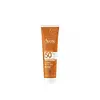What's inside
What's inside
 Key Ingredients
Key Ingredients

 Benefits
Benefits

 Concerns
Concerns

 Ingredients Side-by-side
Ingredients Side-by-side

Water
Skin ConditioningDiethylamino Hydroxybenzoyl Hexyl Benzoate
UV FilterDiisopropyl Sebacate
EmollientCoco-Caprylate/Caprate
EmollientDicaprylyl Carbonate
EmollientDiethylhexyl Butamido Triazone
UV AbsorberGlycerin
HumectantBis-Ethylhexyloxyphenol Methoxyphenyl Triazine
Skin ConditioningGlyceryl Stearate Citrate
EmollientOryza Sativa Starch
AbsorbentPentylene Glycol
Skin ConditioningC12-15 Alkyl Benzoate
AntimicrobialVp/Eicosene Copolymer
Benzoic Acid
MaskingCaprylic/Capric Triglyceride
MaskingCellulose Gum
Emulsion StabilisingCetearyl Olivate
Parfum
MaskingGlycine Soja Oil
EmollientHelianthus Annuus Seed Oil
EmollientMicrocrystalline Cellulose
AbsorbentSodium Hydroxide
BufferingSorbitan Olivate
EmulsifyingTocopherol
AntioxidantTocopheryl Glucoside
EmollientXanthan Gum
EmulsifyingWater, Diethylamino Hydroxybenzoyl Hexyl Benzoate, Diisopropyl Sebacate, Coco-Caprylate/Caprate, Dicaprylyl Carbonate, Diethylhexyl Butamido Triazone, Glycerin, Bis-Ethylhexyloxyphenol Methoxyphenyl Triazine, Glyceryl Stearate Citrate, Oryza Sativa Starch, Pentylene Glycol, C12-15 Alkyl Benzoate, Vp/Eicosene Copolymer, Benzoic Acid, Caprylic/Capric Triglyceride, Cellulose Gum, Cetearyl Olivate, Parfum, Glycine Soja Oil, Helianthus Annuus Seed Oil, Microcrystalline Cellulose, Sodium Hydroxide, Sorbitan Olivate, Tocopherol, Tocopheryl Glucoside, Xanthan Gum
Water
Skin ConditioningEthylhexyl Methoxycinnamate
UV AbsorberC12-15 Alkyl Benzoate
AntimicrobialOctocrylene
UV AbsorberCaprylyl Methicone
Skin ConditioningHexylene Glycol
EmulsifyingEthylhexyl Triazone
UV AbsorberAlcohol Denat.
AntimicrobialPolysilicone-15
UV FilterC14-22 Alcohols
Emulsion StabilisingPolysorbate 80
EmulsifyingButyl Methoxydibenzoylmethane
UV AbsorberStyrene/Acrylates Copolymer
Acrylates/Octylacrylamide Copolymer
PEG/PPG-20/6 Dimethicone
EmulsifyingPolypodium Leucotomos Leaf Extract
Skin ProtectingC12-20 Alkyl Glucoside
EmulsifyingMicrococcus Lysate
Skin ConditioningCamellia Sinensis Extract
AntioxidantPhenoxyethanol
PreservativeTriethanolamine
BufferingSodium Lactate
BufferingMethylparaben
PreservativePropylparaben
PreservativeBHT
AntioxidantLecithin
EmollientLactic Acid
BufferingDisodium EDTA
Parfum
MaskingLinalool
PerfumingLimonene
PerfumingWater, Ethylhexyl Methoxycinnamate, C12-15 Alkyl Benzoate, Octocrylene, Caprylyl Methicone, Hexylene Glycol, Ethylhexyl Triazone, Alcohol Denat., Polysilicone-15, C14-22 Alcohols, Polysorbate 80, Butyl Methoxydibenzoylmethane, Styrene/Acrylates Copolymer, Acrylates/Octylacrylamide Copolymer, PEG/PPG-20/6 Dimethicone, Polypodium Leucotomos Leaf Extract, C12-20 Alkyl Glucoside, Micrococcus Lysate, Camellia Sinensis Extract, Phenoxyethanol, Triethanolamine, Sodium Lactate, Methylparaben, Propylparaben, BHT, Lecithin, Lactic Acid, Disodium EDTA, Parfum, Linalool, Limonene
Ingredients Explained
These ingredients are found in both products.
Ingredients higher up in an ingredient list are typically present in a larger amount.
C12-15 Alkyl Benzoate is made up of Benzoic Acid and long chain alcohols. It has a low molecular weight.
C12-15 Alkyl Benzoate is an emollient and texture enhancer. Due to its solubility, it is often used in sunscreens to help evenly distribute active ingredients.
As an emollient, C12-15 Alkyl Benzoate helps soften and hydrate your skin. Emollients create a film on your skin that traps moisture within.
This ingredient has been reported to cause eye irritation.
Learn more about C12-15 Alkyl BenzoateParfum is a catch-all term for an ingredient or more that is used to give a scent to products.
Also called "fragrance", this ingredient can be a blend of hundreds of chemicals or plant oils. This means every product with "fragrance" or "parfum" in the ingredients list is a different mixture.
For instance, Habanolide is a proprietary trade name for a specific aroma chemical. When used as a fragrance ingredient in cosmetics, most aroma chemicals fall under the broad labeling category of “FRAGRANCE” or “PARFUM” according to EU and US regulations.
The term 'parfum' or 'fragrance' is not regulated in many countries. In many cases, it is up to the brand to define this term.
For instance, many brands choose to label themselves as "fragrance-free" because they are not using synthetic fragrances. However, their products may still contain ingredients such as essential oils that are considered a fragrance by INCI standards.
One example is Calendula flower extract. Calendula is an essential oil that still imparts a scent or 'fragrance'.
Depending on the blend, the ingredients in the mixture can cause allergies and sensitivities on the skin. Some ingredients that are known EU allergens include linalool and citronellol.
Parfum can also be used to mask or cover an unpleasant scent.
The bottom line is: not all fragrances/parfum/ingredients are created equally. If you are worried about fragrances, we recommend taking a closer look at an ingredient. And of course, we always recommend speaking with a professional.
Learn more about ParfumWater. It's the most common cosmetic ingredient of all. You'll usually see it at the top of ingredient lists, meaning that it makes up the largest part of the product.
So why is it so popular? Water most often acts as a solvent - this means that it helps dissolve other ingredients into the formulation.
You'll also recognize water as that liquid we all need to stay alive. If you see this, drink a glass of water. Stay hydrated!
Learn more about Water